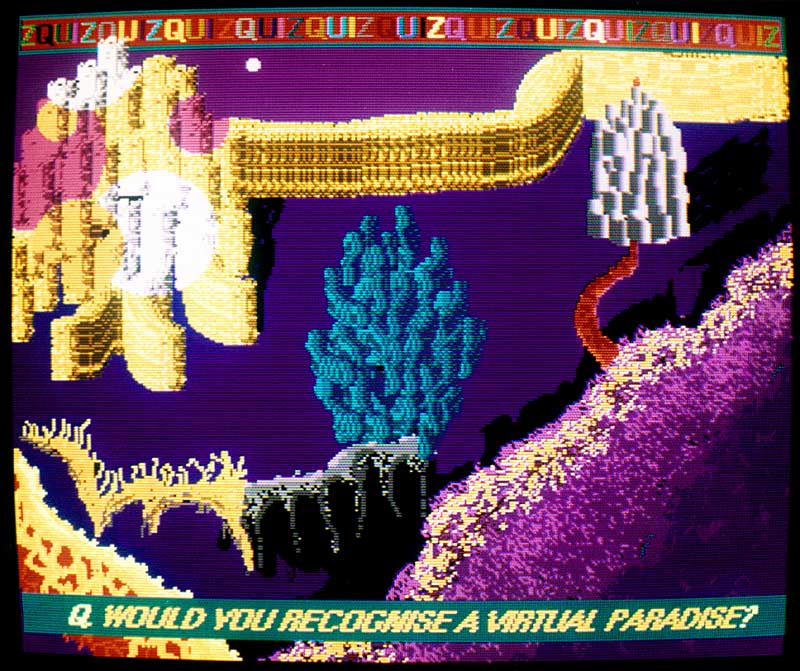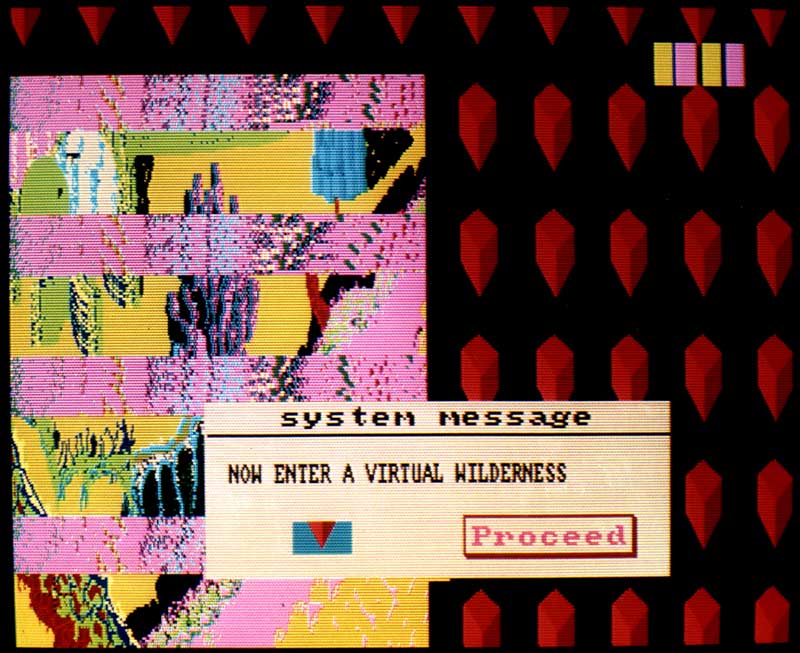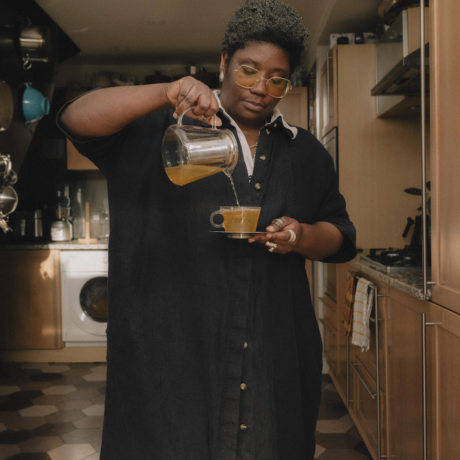
Q: How do I get started as a curator without a portfolio or any previous work?
You’re facing the double bind everyone has when they’re starting out. When you’re looking for your first job, everyone asks for experience but how do you get experience to begin with? If you don’t have a portfolio of work to point to as a reference point, you have to create one.
When we were in art school, Gabrielle used to organise exhibitions. There was one exhibition with a few other students in a gallery space that they paid for, and to cover that cost everyone just chipped in their share. It was fun but it was too expensive to do again and again, which you really need to do if you want to build up a solid portfolio.
So Gab organised an exhibition that didn’t actually exist. She borrowed gallery space from 12ø Collective, an artist-led curatorial collective in London. We knew them because they were in the year above us at art school, and they were happy to lend the space for a day between bookings.
“Gab organised an exhibition that didn’t actually exist…”
Gab collected existing work from friends, installed it all, posted it on listing sites like AQNB, with the line ‘viewable by appointment only.’ Then she simply ignored any emails trying to make a viewing appointment, took slick exhibition install shots, and took everything down after a day or two.
All the artists got a nice set of photos of their work in an exhibition setting, perfect for Instagram and websites, and most importantly they got a line to drop on their CVs. Gabrielle got all that too, as well as the chance to build curatorial muscle.
It was a format that worked so well, she continued with it. After moving back to Liverpool, Gabrielle and her partner Michael Lacey started a curatorial project called Little Man Gallery. They specifically existed to continue putting on these temporary non-exhibitions, and they didn’t have to lie about the format now.
Non-exhibitions became a creative new itinerant format, a clever DIY solution they could be upfront about. They opened their email inbox to submissions from artists who needed that first break, and they would take their work round to spaces to install them for a day. She has written about her career trajectory in long-form on The White Pube and it’s worth a full read.
“Non-exhibitions became a creative new itinerant format, a clever DIY solution they could be upfront about”
So, a vague plan: you should do some non-exhibitions. We can’t encourage you to lie, so you should be upfront about the format. You can go all out with it: edit the photos, write the press release, make it look as good as possible. Teach yourself to do as many things as possible, and figure out how to fill the gaps for the things you can’t do alone.
If non-exhibitions are something you want to stick with, you could lean in. All curatorial projects have to start somewhere: give yourself a name, apply for funding and just carry on by committing to the bit.
If it isn’t for you long term, then you can use the skill and experience you’ve developed to find real paid work. If you want to hold on to your independence, you could be a freelance curator: I’d recommend starting by approaching smaller, artist-led spaces. They can be cliquey but luckily the UK is a big place.
If you are not restricted by your physical location, there are plenty of people out there who are open to new working relationships. They might be unable to give you a full budget for the work you’re proposing, but if lack of budget is the only restraint, they could help you apply for funding or name you in their next grant application.
“The entry bar is unreasonably high. It’s silly, but you can work around it”
Of course, you should come to these moments with an idea already in mind. Is there an artist or even multiple creative practitioners that you want to work with? Why do you want to work with them, and why do you think it would be valuable to put on an exhibition of their work in this specific place, at this specific time? Not only is that useful for your own workings out, but it will make it easier to communicate your ideas to others, whether that is the space you’re proposing to work with, or the funders you are trying to secure cash from.
Before or after you try your hand working with the artist-led, you could always apply for the curatorial traineeships that pop up about the place. It can be good to witness the institutional way of doing curation (contracts, insurance, coordinating with technicians and marketing staff and so on) even if you just take that knowledge right back to your freelance life, never to return.
To sum it all up: the entry bar is unreasonably high. It’s silly, but you can work around it. All of our advice relies on your ability to make things happen for yourself, so it isn’t simple or straightforward. But there are ways to insist on your presence in the art world. This isn’t the only route, it’s just one way that could work. Just make sure that once you’ve got your foot in the door, you make the art world a better place. Make it easier for people to find their way in behind you, or pass this advice on to someone else when they ask you how you did it. Good luck!
Culture Therapy: Let Art Solve Your Problems
A friend recently told me about Suzanne Treister’s Fictional Videogame Stills 1991-1992. If you’re not into games, do not worry, because for the sake of today’s art prescription it doesn’t entirely matter. What we’re looking at is the imagination to create a fiction, not to mention the finesse.
Treister made these digital paintings on an Amiga computer, and rather than use the file itself in her art, she photographed the screen it was on. She writes, “Conceptually this means of presentation was also appropriate in that it made it seem like I had gone into a videogame arcade and photographed the games there, lending authenticity to the fiction.”
“Sometimes, I think we are able to be more creative when our ideas are framed as fiction, as impossible, as existing in this other space”
Every one of Treister’s digital painting implies a whole game we want to know more about but can never play. In the same way, Gabrielle created non-exhibitions, and published a few images alongside an exhibition title as a glimpse into a show nobody could ever visit. Sometimes, I think we are able to be more creative when our ideas are framed as fiction, as impossible, as existing in this other space.
Treister’s work is a testament to imagination that has been totally liberated, and the work is still celebrated to this day.
Illustration by Lucia Pham, an illustrator based in Hanoi, Vietnam
Have a question for The White Pube?
Get in touch with Zarina and Gabrielle at info@thewhitepube.com
GET IN TOUCH








